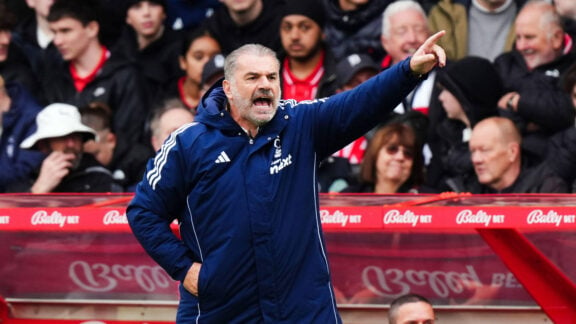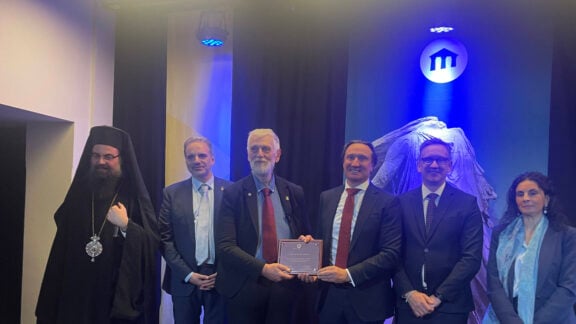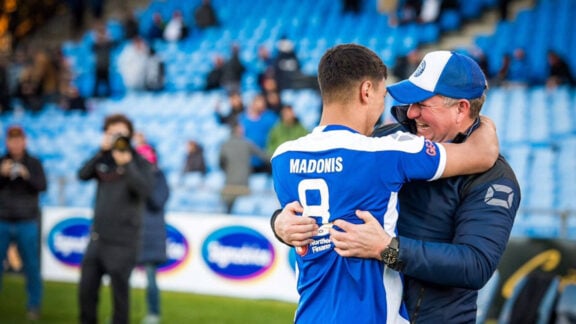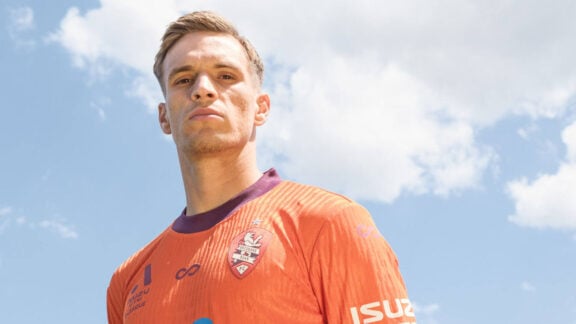Can you imagine the club, which in 2010 was conferred the title of Oceania Team of the 20th Century, playing in the Asian Champions League?
As far-fetched as that may seem now, its passionate supporters are hoping it may become a real possibility. South Melbourne is a sleeping giant of Australian football, according to club director Bill Papastergiadis.
As befits a sleeping giant, South is dreaming big, announcing earlier this week it wants to become one of the next two A-League teams the FFA has indicated it plans to introduce, into an expanded A-League within the next couple of years.
To achieve its dream, South will need to convince the FFA that the A-League needs South Melbourne more than it needs any of the numerous other bidders expected from all over the country, including Geelong, Tasmania, Adelaide, WA, South Sydney and Brisbane.
Papastergiadis, who chairs South’s A-League advisory board, told Neos Kosmos that South Melbourne is in a great position, both on and off the park, to make a persuasive bid.
“Essential to this was securing a licence and lease deal for the (Lakeside) stadium,” he says. “Until that deal was secured, which was only earlier this year, any prospect of a viable deal was not possible. So that achievement earlier in the year, along with on-field success (with senior mens, womens and junior development programs) has put us in the fortunate position of being able to properly position ourselves to bid for an A-League Licence.”
As Papastergiadis elaborates, the stadium deal which secures the club economically underpins and differentiates South’s bid from other existing A-League clubs and other potential bidders.
“No other club in Victoria or Australia has an equivalent stadium deal. It’s not only a 40-year deal, it’s moreso the financial components of that deal. The fact is that this deal enables us to run a club at a stadium with a requirement for very limited attendance. Unlike at AAMI stadium, where you need to have something like 14,000 people to attend a game to break even, we don’t have that same financial constraint. We start breaking even at 1,500 people.
“And more importantly, which no other A-League club has, we’ll have a social club which will be completed in two-and-a-half months’ time, within our facility. All of these things will underpin the economic viability of the proposal by this club.”
Papastergiadis has no doubt that Melbourne is ready to accommodate a third A-League club, and he believes that the FFA favours expansion into the bigger cities over expansion into regional centres.
“Absolutely, that’s not my view. That’s the view of FFA. What Gallop has said is that they are not so confident about how regional clubs have performed, and there’s plenty of carcasses of A-League clubs that have failed in regional cities. What they (FFA) have said is that we need to fish, and fish hard. They’ve admitted that the fish are in Melbourne and Sydney. There are the biggest populations and biggest supporter bases and junior programs. We fit in with their own model about where the growth should be.”
Furthermore, Papastergiadis is adamant South would not cannibalise other clubs’ supporters.
“We will bring our own supporters to the game, such that the Melbourne City-Melbourne Victory teams will in fact be enhanced because they will have competitive derbies which generate significant interest.”
Since South’s intention to bid for an A-League License became public earlier this week, there have been the usual objections raised in some quarters about the club’s strong ethnic heritage and how this would play out in an A-League.
Papastergiadis meets this objection head on, countering with, “I believe I’m as Australian as anyone else in this country. I was born in this country”.
“The notion of ethnicity is irrelevant to the appropriateness of any bid. The bid should be considered on its merits. This concern about ethnic rivalries, if it was a problem, it would’ve been manifest in the NPL, and it hasn’t been manifest at all in the NPL. So it’s a dead issue in my opinion and we’ve all moved on since then. The club has evolved, as has the FFA.”
Papastergiadis could also point objectors to the example of Brisbane Roar, originally founded in 1957 by Dutch immigrants as Hollandia-Inala, which then morphed into Brisbane Lions before eventually becoming Brisbane Roar, and which to the present day retains its orange shirts in deference to its Dutch heritage.
He has no doubts South Melbourne’s inclusion will be beneficial to the A-League.
“At the end of the day, the FFA should be interested in our proposal because we will bring a lot of interest to the A-League which is important to their TV deal. And what do I mean by that? The Herald Sun generated 1000 per cent more interest (for their story on South’s bid) than their AFL and cricket articles. They got swamped with interest. It’s that passion which the A-League and FFA require. And South Melbourne can bring that, passion for and against us.”
Papastergiadis says he is confident the advisory panel will meet with the FFA before the end of the year to discuss South Melbourne’s bid.









